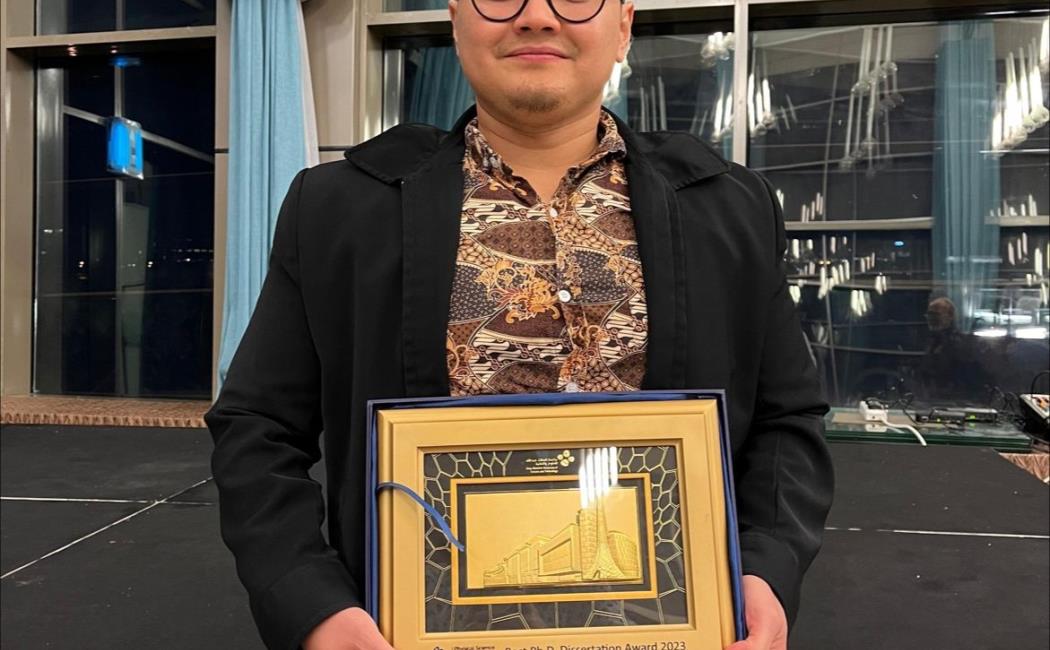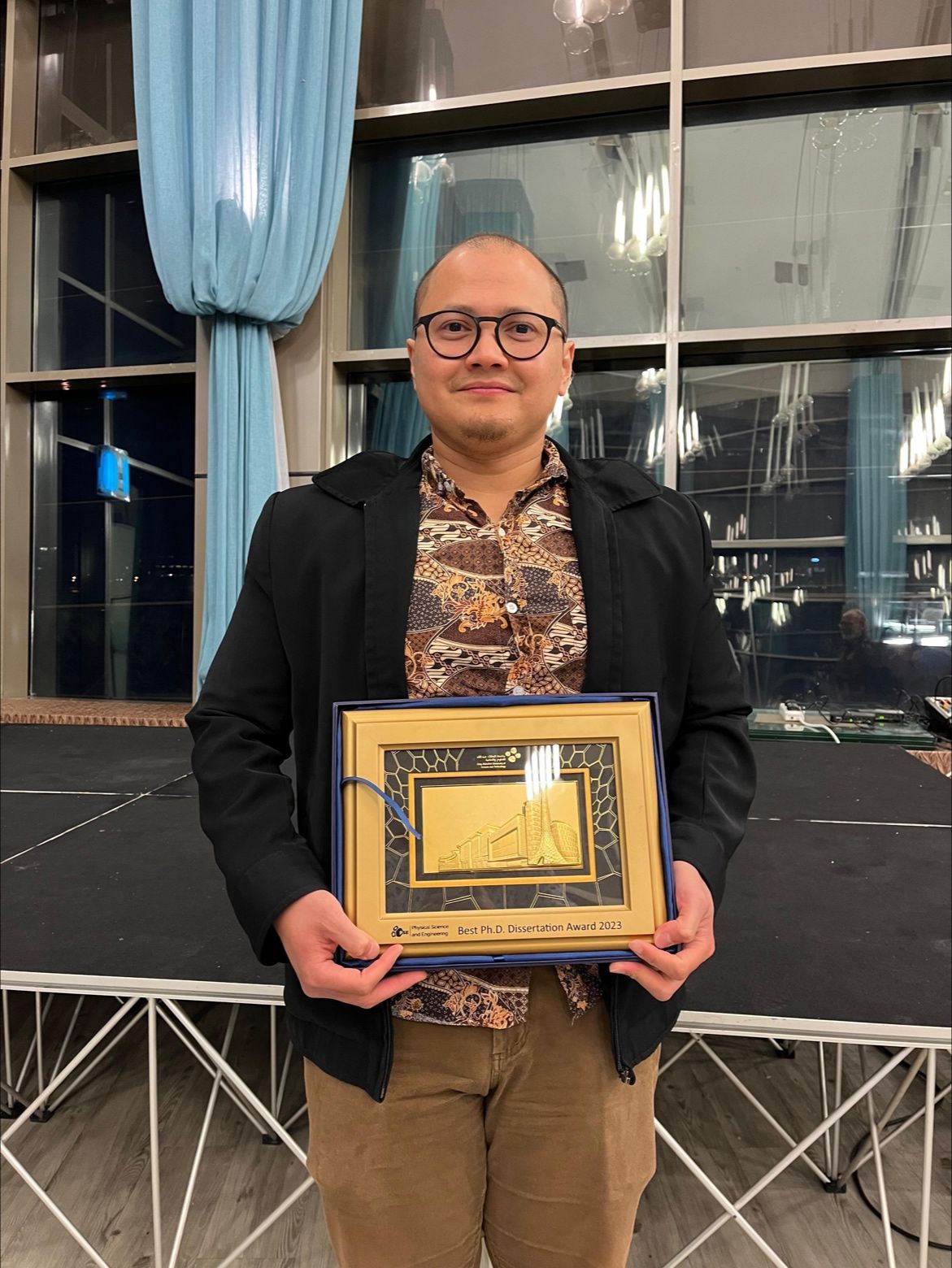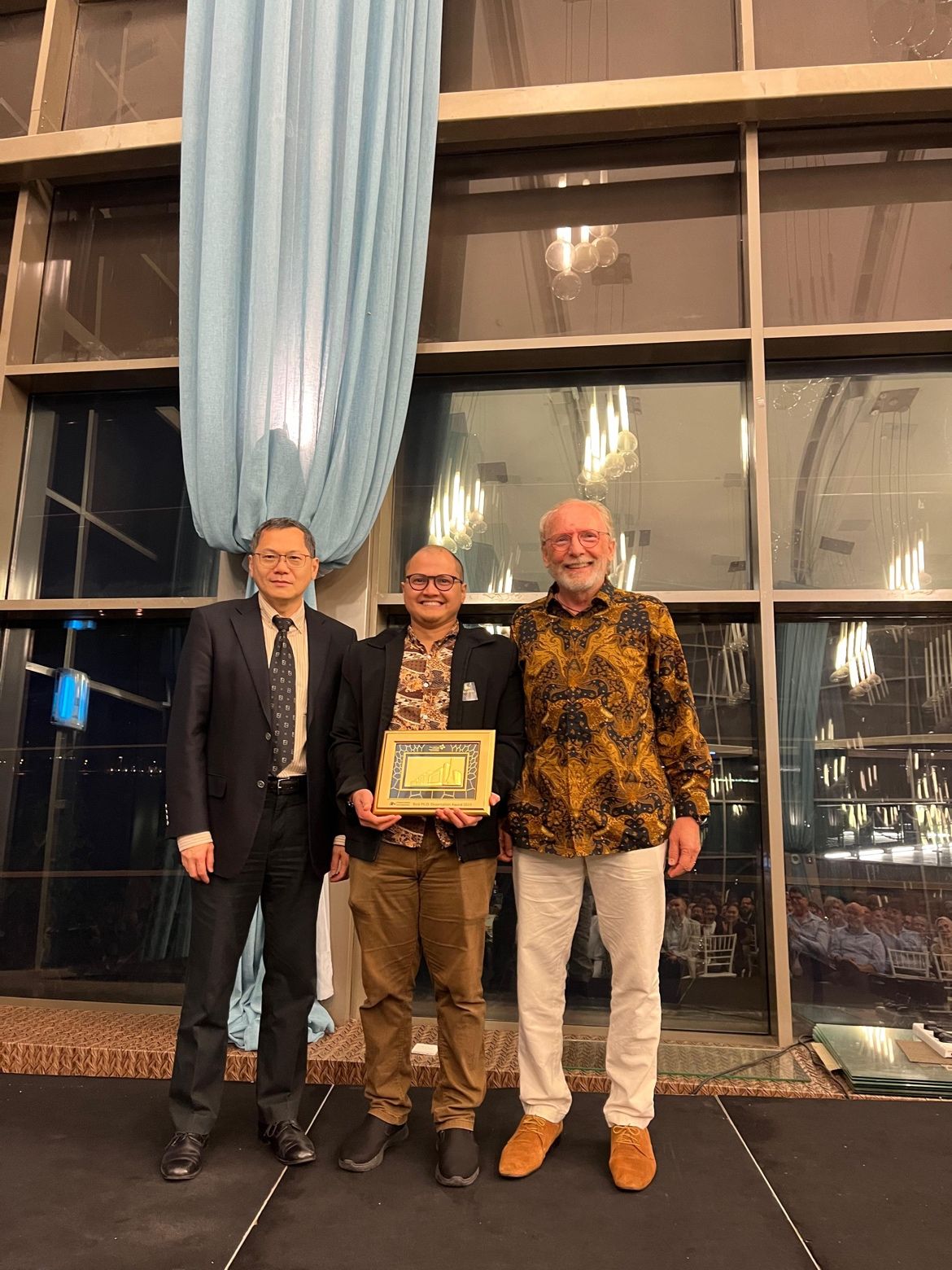.jpg?sfvrsn=39330263_0)
.jpg?sfvrsn=39330263_0)

15 December, 2023
KAUST alumnus Ahmad Ihsan Ramdani has received the 2023 Best Physical Science and Engineering (PSE) Ph.D. Thesis Award. The former member of Professor Volker Vahrenkamp’s CaResS Geology group received the award on Tuesday, December 12, 2023, during the PSE Graduation Dinner.

Hosted by the PSE Dean’s office and the PSE Student Senate, the Dinner honored the remarkable accomplishments and contributions of the Division’s graduating students. The prestigious award recognizes PSE’s doctoral candidates’ outstanding research and scholarly contributions.
Ahmad Ihsan Ramdani, now a research geophysicist at Saudi Aramco’s EXPEC Advanced Research Center, expressed his pleasure, honor and humility at receiving the award.
“This research is not a product of my sole effort,” he noted. “It is a collaborative effort between me; my PI, Professor Volker Vahrenkamp; my dissertation committee, Professors Hussein Hoteit, Thomas Finkbeiner and Tariq Al-Khalifah; and my colleagues in the group. Therefore, it is not a stretch to say that I received the award on behalf of those people.
“This recognition motivates me to continue upholding the high research standards, determination, and tenacity to which I have grown accustomed with my experience at KAUST.”

Unlocking the potential of stromatoporoid-coral facies
During Ahmad Ramdani’s Ph.D. studies, his research focused on building a 3D high-fidelity outcrop-based analog model. A model capable of analyzing and resolving geological heterogeneity within a subsurface reservoir.
The Middle East is widely known as a region containing substantial amounts of oil within layers of geologically heterogeneous carbonate rocks. One of the most significant contributors to this diversity is a rock type called stromatoporoid-coral facies.
There is a lack of understanding of the facies' 3D geometry, architecture and production implications, resulting in suboptimal ultimate recovery—an estimate of how much oil or gas can be recovered from a reservoir or well. As a result, the development of oil fields is severely hindered.
Ahmad Ramdani’s thesis project attempted to rectify this problem by addressing two essential points: first, deciphering and resolving the key geological process behind this heterogeneity through outcrop data; secondly, understanding the systematic reservoir flow behavior within this geologic heterogeneity and formulating an optimum field development strategy to improve ultimate recovery.
Saudi Arabia’s Tuwaiq Mountains escarpment is a geological marvel that contains rocks similar to the deep subsurface oil reservoirs. By studying this natural outcrop, Ahmad Ramdani and his CaResS colleagues mapped and documented—by means of an advanced three-dimensional outcrop analog investigation—the 3D morphology and spatial distribution of the stromatoporoid-coral facies.
The KAUST team’s research was the world’s most comprehensive 3D outcrop analog study at the time. The team combined drone imageries, sedimentology section, gamma-ray survey, near-surface seismic survey, shallow core and many other datasets to cover a 16 km2 area in extensive detail. The data collected, analyzed, synthesized and interpreted was notable for its size and variation.
“From this investigation, our team constructed an outcrop analog reservoir model and assessed the heterogeneity effects of these facies on oil recovery,” he explained. “The team successfully deciphered the geological process behind 3D morphometry and spatial distribution of stromatoporoid-coral facies in the Jurassic shallow-water tropical seas that existed some 150 million years ago over most of Saudi Arabia.
“Using these insights, we formulated a method to mathematically reproduce this heterogeneous geological process and apply it to Middle Eastern subsurface reservoir facies.”
Moreover, the KAUST researchers' study indicated that the associated heterogeneity of these facies could lead to substantial quantities of bypassed hydrocarbons remaining in analogous subsurface reservoirs.
“This research presents a quantitative investigation of meter-scale 3D morphology and spatial distribution of the stromatoporoid-coral facies in a level of detail previously unknown from any place in the world,” Ahmad Ramdani emphasized. “We have shown that this facies variety is a critical geological factor behind reservoir heterogeneities, leading to suboptimum ultimate recovery if left unaccounted.”
Source: PSE